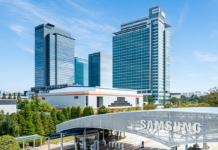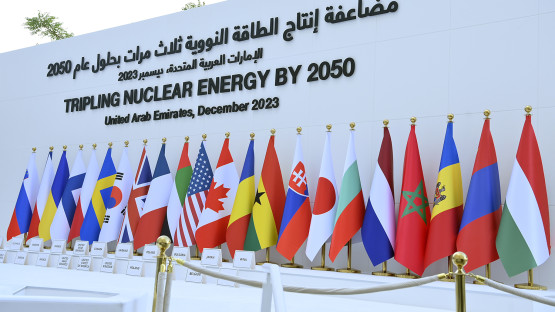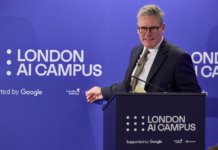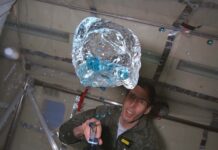The momentum for nuclear energy as a pivotal solution to global climate and energy challenges has continued to build following its recognition at the 28th session of the Conference of the Parties (COP28) to the United Nations Framework Convention on Climate Change in Dubai. As the world gears up for COP29 in Baku, Azerbaijan, nuclear energy is poised to play an even more prominent role in addressing these pressing issues.
### A Landmark Moment at COP28
COP28 marked a significant turning point for nuclear power. For nearly three decades, nuclear energy was largely sidelined at these annual conferences. However, in Dubai, its potential as a clean and reliable energy source was finally acknowledged. The consensus was clear: achieving global net-zero emissions targets necessitates an expansion of nuclear power. This shift in perception has laid the groundwork for further advancements and discussions in subsequent forums.
In March 2024, the International Atomic Energy Agency (IAEA) and the Government of Belgium hosted the first-ever Nuclear Energy Summit in Brussels. This event brought together leaders from over 30 countries and the European Union, all underscoring the critical role of nuclear energy in ensuring energy security, meeting climate goals, and fostering sustainable development. Such gatherings highlight the growing recognition of nuclear power’s potential to contribute significantly to the global energy mix.
### The Path Forward to COP29
As the international community prepares for COP29 in Baku, there is renewed optimism about the role nuclear power can play in the clean energy transition. The IAEA Bulletin emphasizes this potential, showcasing nuclear energy as an integral component of strategies to reduce carbon emissions and promote sustainability.
### Expanding Nuclear Capacity
To meet future energy demands and climate goals, it is essential to diversify nuclear energy solutions. By 2050, there is an ambition to triple nuclear capacity. The majority of the 60 reactors currently under construction are large pressurized water reactors, which are expected to form the backbone of this expansion. However, there is also a growing interest in small modular reactors (SMRs) and microreactors. These innovative technologies, featuring novel designs and coolants, offer a flexible and scalable option for increasing nuclear capacity.
Nuclear energy’s versatility makes it an attractive option for various applications beyond electricity generation. It can help decarbonize industrial sectors that are significant contributors to greenhouse gas emissions. Moreover, as the demand for power from data centers and artificial intelligence solutions is set to surge, companies like Google and Microsoft are exploring advanced nuclear technologies as reliable and clean power sources. This exploration could pave the way for new commercial opportunities in the nuclear sector, particularly in regions where nuclear power has yet to gain a strong foothold.
### Meeting Major Milestones
As more countries express interest in incorporating nuclear energy into their power generation mix, the IAEA has updated its Milestones Approach to include considerations specific to SMRs. This comprehensive framework aids countries in developing the necessary infrastructure for a safe, secure, and sustainable nuclear power program. It is particularly beneficial for newcomer nations, where demand for nuclear energy is on the rise.
Energy scenario modeling is a crucial starting point for countries charting their path to net-zero emissions. The IAEA’s Atoms4NetZero initiative provides policymakers with crucial data for making informed, science-based decisions. This initiative helps countries harness the full potential of nuclear energy, not only for electricity generation but also for applications in non-electrical sectors, which is key to decarbonizing national economies.
### Fostering Progress Through Innovation
To effectively expand nuclear power, novel approaches to project implementation are needed. Completing new build projects on time and within budget is vital to achieving expansion goals. The IAEA’s Nuclear Harmonization and Standardization Initiative is supporting countries in adopting harmonized regulatory frameworks and industrial standards. These efforts facilitate the deployment of safe and secure SMRs and other advanced reactors.
A robust and diverse workforce is critical to ensuring the long-term sustainability of nuclear energy. The IAEA is actively supporting countries in workforce development through various programs, including the Nuclear Energy Management School, the IAEA Marie Skłodowska-Curie Fellowship Programme, and the Lise Meitner Programme. These initiatives, along with numerous training sessions, workshops, and peer review services, aim to equip the next generation of nuclear professionals with the necessary skills and knowledge.
### Ensuring Safety and Security
As the use of nuclear power expands, the IAEA’s role in verifying the peaceful use of nuclear material becomes increasingly important. The continued growth of nuclear energy will lead to more nuclear material and facilities under IAEA safeguards. By leveraging advanced technologies and collaborating with states expanding their nuclear capabilities, the IAEA is well-prepared to meet the increased demands of the international community. This commitment is crucial as the world strives to achieve net-zero emissions.
### The Road Ahead
The enthusiasm for clean and reliable nuclear energy, as demonstrated at COP28, continues to grow. At COP29, countries have the opportunity to further explore nuclear energy’s potential as a key component of a net-zero future. As nations gather in Baku, the focus will be on ensuring that nuclear power reaches its full potential in the global energy landscape.
### Additional Resources and Information
For those interested in delving deeper into the intersection of nuclear energy and climate change, several resources are available. The IAEA provides insights into the role of nuclear power in climate-resilient power systems and highlights its contributions to building resilience in food and water systems through nuclear science and technology.
Moreover, the IAEA’s Atoms4NetZero initiative models energy scenarios that incorporate the full potential of nuclear power. These resources offer valuable perspectives for policymakers, industry leaders, and the public as they navigate the complexities of the energy transition.
In summary, the growing recognition of nuclear energy’s role in the clean energy transition is a promising development. With the upcoming COP29 summit, there is an opportunity to build on this momentum and ensure that nuclear power becomes a central pillar in achieving global climate and energy goals. For more detailed information on these topics, you can visit the IAEA’s official website.
For more Information, Refer to this article.
































